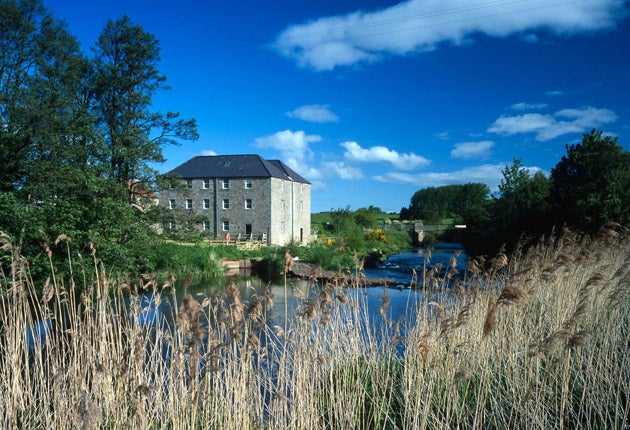A museum with no walls. It's just the place to display a battlefield
About Britain

Your support helps us to tell the story
From reproductive rights to climate change to Big Tech, The Independent is on the ground when the story is developing. Whether it's investigating the financials of Elon Musk's pro-Trump PAC or producing our latest documentary, 'The A Word', which shines a light on the American women fighting for reproductive rights, we know how important it is to parse out the facts from the messaging.
At such a critical moment in US history, we need reporters on the ground. Your donation allows us to keep sending journalists to speak to both sides of the story.
The Independent is trusted by Americans across the entire political spectrum. And unlike many other quality news outlets, we choose not to lock Americans out of our reporting and analysis with paywalls. We believe quality journalism should be available to everyone, paid for by those who can afford it.
Your support makes all the difference.A new project to commemorate the 500th anniversary of the Battle of Flodden is taking a groundbreaking approach to the presentation of history. And though this fifth centenary won't take place until 2013, much of this new "museum" is already there to see.
The recently designated Flodden 1513 Eco-Museum, which will straddle the border between Scotland and Northumberland, will be the first of its kind in England and the first cross-border eco-museum in the UK.
But what is an eco-museum? You might think it's about the environment, but "eco" is derived from the Greek "ekos", meaning "house" or "whole", and this will, essentially, be a museum without walls, a collection of sites grouped around a common theme.
"The closest idea to the concept is a trail," says James Joicey, chair of the Flodden 2013 steering group. "But these tend to be top-down projects, imposed by tourism organisations. Our eco-museum will be a sustainable, community-led way of presenting and managing the heritage of Flodden."
And Flodden – the largest battle ever fought between the English and the Scots – is surely the perfect subject. Scattered across the border area are a number of sites connected to the event, yet their significance and inter-relationships can go unnoticed in such a remote spot. Access for tourists is a challenge.
Sustainability is achieved by innovations, such as the virtual visitor centre – a website (flodden1513.com). Community groups will help research local history and contribute with projects such as a commemorative stained-glass window for Coldstream Church.
The idea is that once a visitor's imagination is captured at one of the sites, they will be offered ideas on which site they should go to next. Along the way, it is hoped local businesses, such as village shops and B&Bs, will benefit from increased tourism.
Heatherslaw Corn Mill is one of 12 sites included in the project's first phase. A working mill at the time of the battle – and still functioning today – it re-creates the life of the medieval miller, but its connection to Flodden goes unmentioned at present. Soon, branded signage – including codes offering access to information via smartphones – will point the visitor to Flodden Field. There's even talk of a Flodden flapjack.
A calendar of commemorative events is planned for 2013, but the Flodden 1513 project won't stop there. A second phase of sites is due to be included in the museum and community participation will continue to be rolled out. "We hope," says Mr Joicey, "that this could become a model to run with."
simone.freelance@mac.com
Join our commenting forum
Join thought-provoking conversations, follow other Independent readers and see their replies
Comments